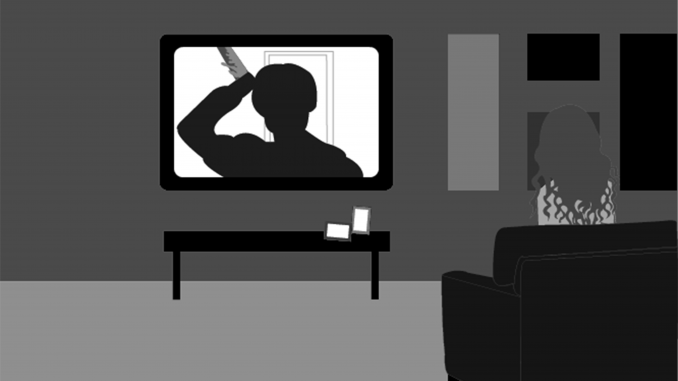

A popular horror movie of 2016 was “Split,” directed by M. Night Shylamalan, which focused on a man living with dissociative identity disorder who abducts three girls.
The film takes aspects of the mental condition, like having multiple distinct personalities taking control of the individual, and uses these symptoms to make the viewer terrified of the main character, the Verge, a technology news site, reported.
This portrayal of DID was met with backlash from mental health experts because it demonizes people with mental illness and incorrectly portrays the disorder to the public, who are likely to be uneducated on the realities of DID, CNN reported.
The movie might be entertaining, but using mental illness as a ploy to sell movie tickets is exploitative. Movies that characterize their villains as having mental illnesses associate the illness with something threatening, which perpetuates damaging stereotypes about those with these conditions.
Horror movies are a significant part of Halloween, and with the holiday around the corner, it’s important to recognize the negative stigma about mental illnesses perpetuated in films during this season.
“A lot of people have a lot of perceptions about what mental illness looks like, but it’s not what the actual truth is,” said Rebecca Siegel, a school psychology Ph.D. student who teaches a course called “The Meaning of Madness.”
Siegel also described how movies like “Split” reinforces the stigma about mental illness.
“It dramatizes it, and it creates the idea that people who have a mental illness are something scary and a thing that we should be afraid of,” Siegel said.
The problem doesn’t stop with dissociative identity disorder.
The 2011 film “The Roommate” features a violent, terrifying villain with bipolar disorder, perpetuating negative stigma about those suffering from this condition, the Huffington Post reported.
The 2015 film “The Visit,” also directed by Shylamalan, is listed as the worst depiction of mental illness in any movie by the mental health advocacy organization Resources to Recovery. The film’s villains, who have schizophrenia, appear frightening and monstrous to terrify audiences.
Depicting characters with mental illnesses as overly violent and dangerous is stigmatizing because mass media, like movies, is the dominant way most people are introduced to mental illnesses, according to the U.S. News and World Report.
People with mental illnesses are responsible for a very small amount of crimes, according to a 2015 study in the Journal and Epidemiology and Community Health, and movies that feature overly violent characters with mental illnesses send an inaccurate message about those conditions.
This portrayal of people with mental illness is irresponsible because those with these conditions have historically been criminalized, isolated and abused in some former asylums.
Pennhurst Asylum, in Chester County, Pennsylvania, was one of those asylums.
Pennhurst started as a state school and hospital for the mentally ill, but it was exposed in the 1960s for neglecting and abusing its patients. Pennhurst was named the “Shame of Pennsylvania” for the abusive practices that took place there and was closed in 1987.
Twenty-five years after its closing, Pennhurst reopened for business — not as a hospital, but as a haunted attraction. Once the sight of torture, abuse and inhumane treatment toward the mentally ill, Pennhurst is now utilized to make money off of a Halloween gimmick.
In the same way horror movies have exploited mental illness, so have former asylums, like Pennhurst.
“Any time you have a mass murderer or a psycho killer, you have hints of demeaning imagery toward mental illness,” said Jim Conroy, co-president of Pennhurst Memorial and Preservation Alliance.
Even though horror movies may seem harmless, the stigma and stereotypes that they sometimes perpetuate can seriously hurt.
“I don’t think the stigma is isolated to the Halloween season. That may be when folks make different choices around costumes or the media that they consume, but that media and that language is really used quite frequently, like when people describe things as ‘crazy’ when they really mean incredible, unbelievable, or unusual,” said Liz Zadnick, the assistant director of the Wellness Resource Center.
Mental illness is not a joke or a tool for entertainment, it is a serious thing hurting people every day.



—-Horror movies perpetuate mental illness stigma
So do headlines. Plese: No matter who taught you to say there is a stigma to mental illnesses, you have free will, you do not have to repeat them.
===Horror movies perpetuate mental illness stigma
Headline perpetuates mental illness stigma